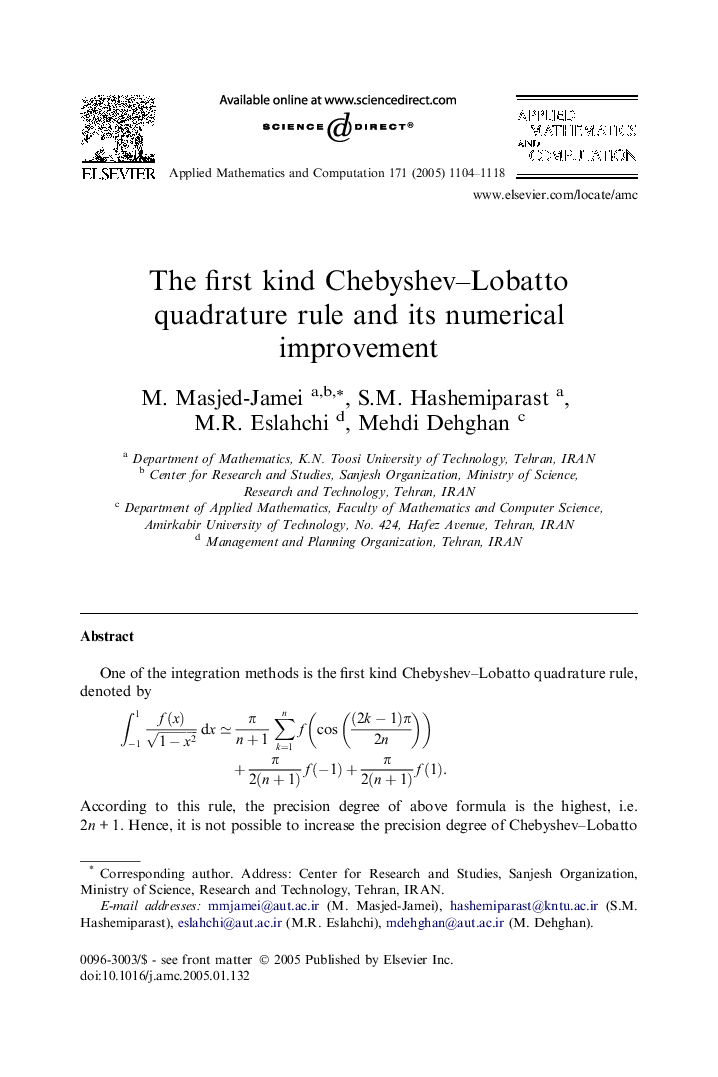| Article ID | Journal | Published Year | Pages | File Type |
|---|---|---|---|---|
| 9506268 | Applied Mathematics and Computation | 2005 | 15 Pages |
Abstract
One of the integration methods is the first kind Chebyshev-Lobatto quadrature rule, denoted byâ«-11f(x)1-x2dxâÏn+1âk=1nfcos(2k-1)Ï2n+Ï2(n+1)f(-1)+Ï2(n+1)f(1).According to this rule, the precision degree of above formula is the highest, i.e. 2n + 1. Hence, it is not possible to increase the precision degree of Chebyshev-Lobatto integration formulas anymore, we will present a matrix proof for this matter. But, on the other hand, we claim that one can improve the above formula numerically. To do this, we consider the integral bounds as two new unknown variables. This causes to numerically be extended the monomial space f(x) = xj from j = 0, 1, â¦, 2n + 1 to j = 0, 1, â¦, 2n + 3 (two monomials more than the first kind Chebyshev-Lobatto integration method). In other words, we present an approximate formula asâ«abf(x)1-x2dxââi=1nwif(xi)+v1f(a)+v2f(b),in which a, b and w1, w2, â¦, wn and x1, x2, â¦, xn are all unknowns and the formula is almost exact for the monomial basis f(x) = xj, j = 0, 1, â¦, 2n + 3. Several tests are finally given to show the excellent superiority of the proposed nodes and weights with respect to the usual first kind Chebyshev-Lobatto nodes and weights. Let us add that in this part we have also some wonderful 5-point formulas that are comparable with 100002-point formulas of the first kind Chebyshev-Lobatto quadrature rules in average.
Keywords
Related Topics
Physical Sciences and Engineering
Mathematics
Applied Mathematics
Authors
M. Masjed-Jamei, S.M. Hashemiparast, M.R. Eslahchi, Mehdi Dehghan,
